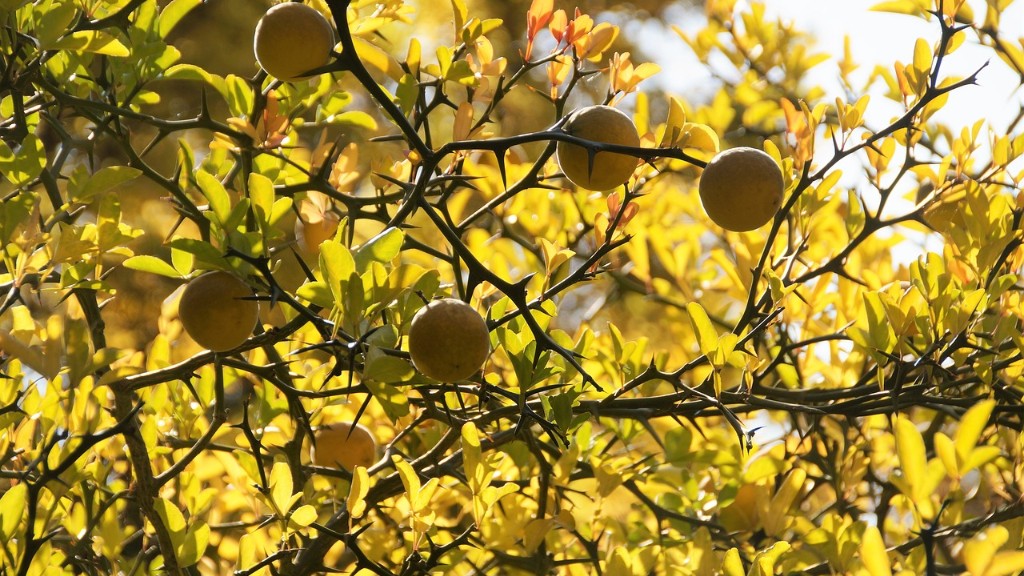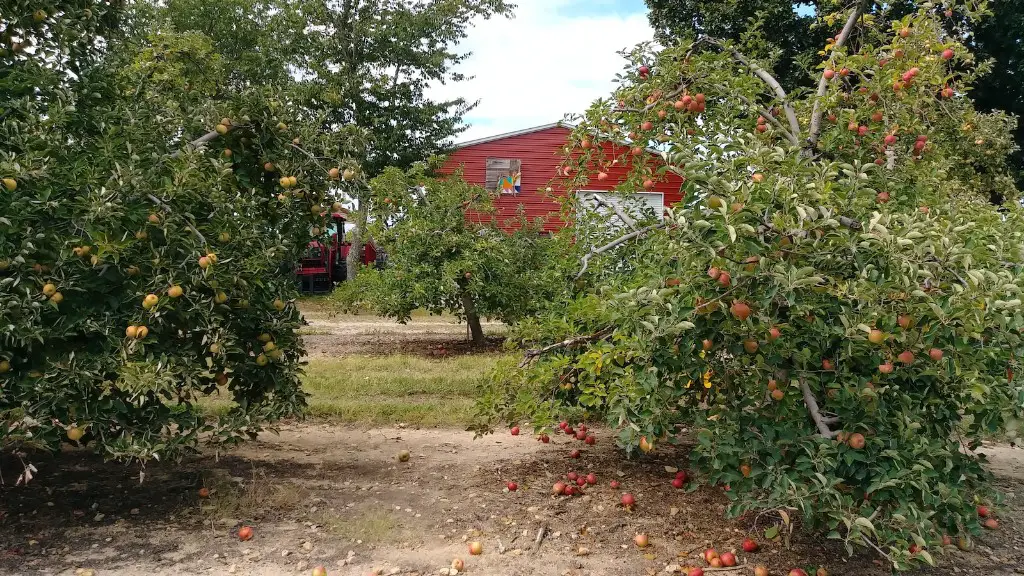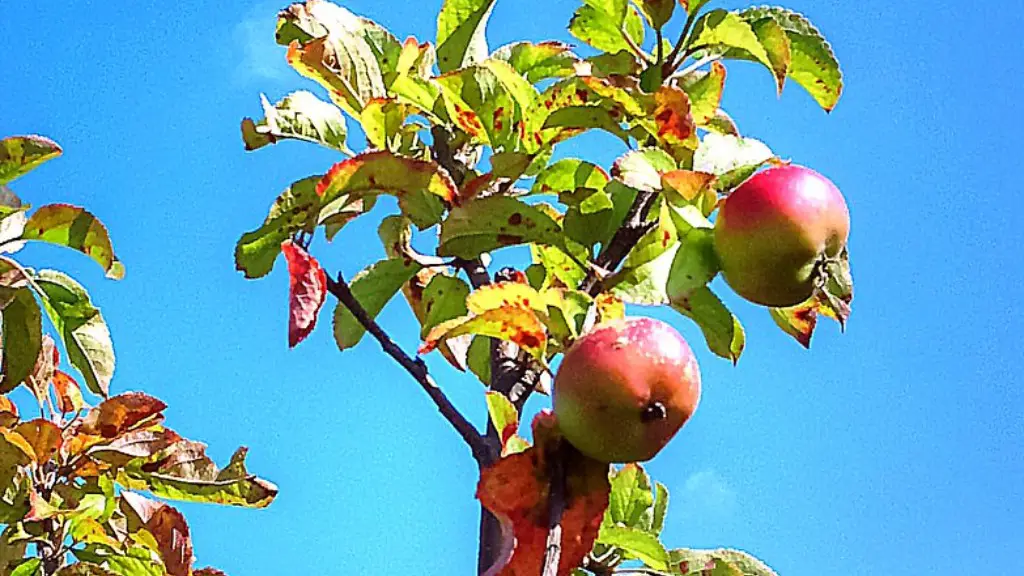When it comes to lemon trees, the growth rate can often depend on the climate, as well as the soil and water availability. Generally in warm climates lemon trees grow quicker, thought to be up to 20 feet in 10 years. In cooler climates, the growth rate is slower, with up to 10 feet of growth in around 20 years.
When planted from seed, lemon trees typically take two years to grow, but most lemon trees are grown in greenhouses and then transplanted. Regardless of the growing conditions, it’s important to routinely prune and remove dead branches as this can help speed up the growth rate of the tree.
When lemon trees are young, they need to be looked after and nurtured more so than an older tree. Regular fertilizing and watering is vital during the first two years of the tree’s life. Lemons usually don’t start producing fruit until they’re 3-4 years old.
Lemon trees naturally self-pollinate, but for greater yields, one can manually pollinate the flowers. Additionally, it’s essential to keep nutrient levels high and to ensure that enough water is available to the tree, as this can affect the growth rate.
Young lemon trees need to be in soils that have good drainage and young trees benefit from consistent intense pruning. However, if the tree gets too much pruning or too much fertilizer, this can actually slow the growth rate down.
Lastly, if a lemon tree is planted in a pot and isn’t getting the best soil or nutrients, then this can also affect the growth rate. A deep, rich soil and good drainage are key to maximizing the growth rate of a lemon tree.
Nutrients and Water Availability
The availability of nutrients, minerals and water are all key factors in the growth rate of a lemon tree. A soil with low nutrients can result in stunted growth, while too much water can also cause root rot and problems for the lemon tree.
Consistent fertilizing with a balanced or citrus fertilizer typically helps the growth of the lemon tree and can help ensure an optimal growth rate. Additionally, ensuring the soil has sufficient drainage is important to reduce the risk of root rot.
It’s also important to ensure that the lemon tree gets enough sunlight, as many lemon tree varieties prefer full sun for most of the day. Providing lemon tree varieties with enough light can help improve the growth rate of the tree.
Water is another factor that can affect the growth rate of a lemon tree. Over-watering a lemon tree can affect the growth rate, as can water that is low in nutrients. Ensuring that an adequate amount of water and nutrients are available to the tree is one of the best ways to ensure an optimal growth rate.
Lastly, all lemon tree varieties benefit from a consistent pruning routine. Pruning lemon trees helps improve the growth rate by removing dead and dying branches, as well as excess foliage. This can also help manage the tree’s shape and helps keep it in a more natural and healthy form.
Pest Management
One of the most common causes of poor lemon tree growth can be due to pests. Some of the most common pests that affect the growth of lemon trees include aphids, mites, scale insects, and citrus leaf miners.
Pest infestations typically need to be treated with an insecticide as soon as possible. Routine pest management is important to ensure that the lemon tree is not impacted by pests.
In addition to pests, certain diseases, such as citrus blight and citrus canker, may affect the growth rate of a lemon tree. Routine inspections of the tree can help detect potential diseases and allow for quick corrective action.
In order to protect lemon trees from pests and diseases, it is important to routinely inspect the tree and apply any necessary treatments. Additionally, providing the tree with sufficient sunlight, water and nutrients is also vital to promote healthy growth.
Lastly, it’s important to minimize physical damage to the tree. Physical damage to the trunk or branches of a lemon tree can lead to infection and minimized growth rate. This can be minimized with regular pruning, as well as protecting the tree from harsh weather and animals.
Soil Conditions
The soil conditions in which a lemon tree is planted can also have an effect on the growth rate. Lemon trees prefer soils that are well-draining, deep and nutrient rich. Clay soils should be avoided as they can inhibit the growth of the lemon tree.
Applying mulch around the base of the tree can help maintain good soil conditions. Mulch helps retain moisture in the soil, and thus helps keep the soil moist, which is one of the key factors for optimizing the growth rate.
The pH of the soil can also impact the growth rate of a lemon tree. The ideal pH for a lemon tree is between 6.5 and 7.5, which is slightly acidic. Applying soil additives, such as elemental sulfur or ammonium sulfate, can help reduce the pH to the near-ideal range.
It’s important to regularly check the soil conditions, as soil conditions can change over time. Applying soil amendments and fertilizer can also help improve the growth rate. Additionally, using good quality compost as a fertilizer can help add necessary nutrients to the soil.
In summary, the growth rate of a lemon tree can vary depending on a number of factors. Knowing how much sunlight, water and nutrients the tree needs, as well as providing good soil conditions, can help maximize the growth rate of the tree. Additionally, good pest and disease management, as well as regular pruning, can also help promote healthy growth.
Trees Suitable for Climate
The type of lemon tree that is planted can have an effect on the growth rate. Depending on the climate, different lemon tree varieties are better suited. For example, Meyer lemon trees are better suited for colder climates, whereas Eureka lemon trees are better suited for warmer climates.
Temperature, sunlight and soil conditions all play a role in selecting the right lemon tree for a particular climate, thus ensuring optimal growth rate. Knowing the exact climate for a particular area can help determine the best variety of lemon tree for that specific climate.
Choosing a lemon tree that is adapted and will thrive in a specific climate is key to maximizing the growth rate. Additionally, proper pruning and water management can help a lemon tree reach its potential.
When it comes to lemon trees, proper soil conditions and good care and maintenance are key components for optimal growth. Nutrients, water and sunlight all affect the growth rate and should be taken into consideration when planting and caring for a lemon tree.
When it comes to lemon trees, it’s important to understand the climate and the conditions of the soil, as well as the tree’s needs in order to ensure optimal growth. Providing the tree with the right amount of nutrients, water and sunlight, as well as proper pest and disease management, are all essential to maximize the growth rate of a lemon tree.





